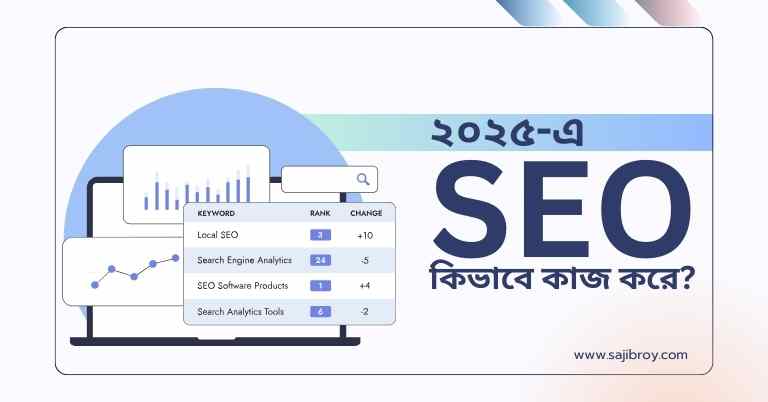Goals are the desired outcomes you want to achieve, while KPIs are specific metrics that measure progress towards those goals.
Understanding the difference between goals and Key Performance Indicators (KPIs) is essential for anyone aiming to achieve success in various aspects of life, be it in business, education, personal development, or beyond. In this definitive guide, we’ll delve into the distinct characteristics of goals and KPIs, how to set them effectively, and why this understanding is crucial for attaining your objectives.
Let's See the Topic Overview
Understanding The Difference
In order to effectively measure and track the progress of your business, it is crucial to understand the difference between goals and Key Performance Indicators (KPIs). While both are important in driving success, they serve different purposes and require distinct methodologies. In this section, we will explore what goals and KPIs are, why it is vital to differentiate between them, and how to define each one.
What Are Goals And KPIs?
Goals refer to the broad objectives or desired outcomes that your business aims to achieve. They provide a sense of direction and purpose, guiding your actions and strategies. Whether you want to increase revenue, expand market share, or improve customer satisfaction, goals serve as the overarching targets that drive your business forward.
On the other hand, KPIs are measurable metrics and performance indicators that allow you to track progress toward your goals. KPIs provide specific numerical values or performance indicators that help you evaluate the effectiveness of your strategies and initiatives.
Why Is It Important To Differentiate Between Goals And KPIs?
Differentiating between goals and KPIs is crucial for several reasons:
- Clarity: By defining and differentiating your goals and KPIs, you ensure that everyone in your organization has a clear understanding of what they are working towards and how progress will be measured.
- Focus: Clearly distinguishing between goals and KPIs allows you to prioritize and allocate resources accordingly. It helps you identify which metrics are most critical for achieving your desired outcomes.
- Accountability: By setting specific KPIs, you establish measurable targets that hold individuals and teams accountable for their performance. This encourages productivity and ensures alignment with your overall business objectives.
Defining Goals: Objectives And Desired Outcomes
When defining goals, it is essential to focus on both the objectives and desired outcomes. Objectives refer to the specific actions or activities that need to be undertaken to achieve your goals. They provide a tangible roadmap towards your desired outcomes.
Defining KPIs: Measurable Metrics And Performance Indicators
Defining KPIs involves identifying the measurable metrics and performance indicators that will help you gauge progress toward your goals. KPIs should be specific, relevant, and aligned with your objectives. They serve as the quantifiable benchmarks against which you can evaluate success and make data-driven decisions.
The Relationship Between Goals And KPIs
Goals and KPIs are intrinsically linked. Each goal should have a set of associated KPIs that provide the means to measure and track progress. KPIs act as the bridge between your goals and the actions required to achieve them. Therefore, it is crucial to ensure that your KPIs are aligned with your goals and directly contribute to their achievement.
Setting Effective Goals
Setting effective goals is crucial for the success of any business or individual. Goals provide a clear direction and purpose, ensuring that efforts are focused and progress can be measured. However, goals need to be differentiated from Key Performance Indicators (KPIs), as they serve different purposes in tracking and measuring progress.
The Smart Framework For Goal Setting
Setting goals using the SMART framework is a widely recognized and effective approach. SMART stands for Specific, Measurable, Achievable, Relevant, and Time-bound, and each element plays a crucial role in goal setting.
Specific Goals: Clarity And Focus
Specific goals are well-defined and focused. They outline exactly what needs to be achieved, leaving no room for ambiguity. When setting specific goals, it is important to identify the desired outcome and clearly articulate what success looks like.
Measurable Goals: Quantifiable Metrics
Measurable goals are those that can be accurately tracked and measured. By establishing quantifiable metrics, progress can be monitored and evaluated. Measuring goals allows for data-driven decision-making and enables adjustments to be made if necessary.
Achievable Goals: Realistic And Attainable
Achievable goals are realistic and attainable within the given resources and constraints. While it is important to set ambitious goals, they should also be within reach. Setting unattainable goals can demotivate individuals and hinder progress. It is crucial to assess feasibility and consider available resources before setting goals.
Relevant Goals: Alignment With Objectives
Relevant goals are aligned with the overall objectives and strategies of the business or individual. It is essential to ensure that goals contribute to the bigger picture and are in line with the purpose and direction of the organization. Alignment ensures that efforts and resources are directed toward meaningful outcomes.
Time-bound Goals: Deadlines And Timelines
Time-bound goals have clear deadlines and timelines. Setting specific timeframes allows for better planning, prioritization, and accountability. Deadlines help create a sense of urgency and ensure that goals are not left indefinitely. By defining time-bound goals, individuals and organizations can work towards specific milestones and track progress effectively.
Choosing Meaningful KPIs
When it comes to measuring the success of your business, setting goals is essential. However, goals alone may not provide the actionable insights you need to make informed decisions. This is where Key Performance Indicators (KPIs) come into play. KPIs help you track specific metrics that are aligned with your organization’s goals, enabling you to measure progress, identify areas for improvement, and make data-driven decisions. But how do you ensure that the KPIs you choose are truly meaningful and aligned with your objectives? Let’s explore the key steps involved in selecting and utilizing meaningful KPIs.
Determining The Purpose Of KPIs
Before diving into selecting specific KPIs, it’s important to determine the purpose they will serve in your organization. Are you looking to improve efficiency, increase revenue, or enhance customer satisfaction? Understanding the objectives you want to achieve through KPIs will help you focus on selecting the right metrics. By aligning your KPIs with your organization’s strategic goals, you’ll ensure that your efforts are directed toward meaningful outcomes.
Identifying Relevant Metrics
Once you have a clear understanding of the purpose of your KPIs, the next step is to identify relevant metrics. This involves assessing the specific data points that will provide insights into your progress towards achieving your goals. For example, if your goal is to increase website traffic, relevant metrics may include the number of unique visitors, page views, and average time spent on the site. By selecting metrics that directly contribute to your objectives, you’ll be able to measure success accurately.
Aligning Kpis With Goals
Aligning your chosen KPIs with your strategic goals is crucial for ensuring that your efforts are focused and meaningful. Each KPI should be directly related to a specific goal and provide actionable insights. For instance, if your goal is to improve customer satisfaction, a relevant KPI could be the Net Promoter Score (NPS), which measures customer loyalty and likelihood to recommend your brand. By aligning KPIs with goals, you’ll be able to track progress and make informed decisions that drive results.
The Importance Of Data Accuracy And Availability
To ensure the reliability and credibility of your KPIs, it’s essential to prioritize data accuracy and availability. Without accurate and reliable data, your KPIs can become meaningless or misleading. Invest in robust data collection and analysis systems to ensure that you have access to timely, accurate, and relevant data. This will enable you to track your KPIs effectively and make data-driven decisions with confidence.
Tracking Progress And Making Adjustments
Tracking progress toward your goals is an ongoing process. Once you have established meaningful KPIs and aligned them with your objectives, it’s important to continuously monitor and analyze the data. Regularly tracking your KPIs will provide insights into the effectiveness of your strategies and initiatives. If you find that certain KPIs are not yielding the desired results, be prepared to make adjustments and fine-tune your approach. Flexibility and adaptability are key in ensuring that your KPIs accurately reflect the progress you are making toward your goals.![]()
In conclusion, choosing meaningful KPIs involves determining the purpose of KPIs, identifying relevant metrics, aligning KPIs with goals, prioritizing data accuracy and availability, and continuously tracking progress while making necessary adjustments. By following these steps, you can ensure that your chosen KPIs provide valuable insights that contribute to the success of your organization.
Goal-oriented Vs. KPI-oriented Approaches
Understanding The Different Perspectives
When it comes to setting and measuring business objectives, it’s crucial to understand the difference between a goal-oriented and KPI-oriented approach. While both are important, they offer distinct perspectives on how to achieve success and track progress.
Goals are the overarching desired outcomes of your business or marketing efforts. They define what you want to achieve in terms of performance, growth, or impact. These can be broad and long-term, such as increasing revenue by 20% in the next year, or specific and short-term, like generating 500 leads per month.
KPIs, on the other hand, are specific, measurable metrics that indicate performance or progress towards a goal. They provide a quantitative way to track success and determine if the desired outcome is being achieved. KPIs can encompass various aspects of business operations, such as website traffic, customer conversion rates, or social media engagement.
When To Prioritize Goals Over KPIs
While KPIs are essential for tracking progress, there are times when it is more important to focus on goals. One such instance is at the beginning of a new venture or project, where goals help set the overall direction and provide a vision for success. By defining clear goals upfront, you establish a roadmap for your team and ensure everyone is aligned towards a common objective.
Goals are also critical for determining the overall purpose and impact of your business. They help clarify your mission statement and provide a sense of direction and purpose. Before diving into KPIs, it’s crucial to establish what you want to achieve and why.
When To Prioritize KPIs Over Goals
While goals set the direction, KPIs provide the tangible measurements that guide your progress. Once you have defined your goals, identifying the relevant KPIs becomes crucial for effective monitoring and evaluation. KPIs provide quantifiable data that helps you track your performance, identify areas for improvement, and make informed decisions.
Prioritizing KPIs becomes essential when you need to take immediate action and monitor specific aspects of your business or marketing strategy. For example, if your goal is to increase website traffic, focusing on KPIs such as organic search traffic, referral traffic, and click-through rates will provide actionable insights into how well your efforts are performing in driving traffic.
Balancing Qualitative And Quantitative Measures
While KPIs are typically quantitative in nature, it’s essential to balance them with qualitative measures. Quantitative data provides valuable insights into performance, but it may not capture the full picture. Incorporating qualitative measures, such as customer feedback, surveys, or sentiment analysis, can provide a more complete understanding of the effectiveness of your goals and KPIs.
By combining both qualitative and quantitative measures, you gain a comprehensive view of your business’s performance and can make data-driven decisions based on a more holistic understanding.
Collaboration Between Goal Setters And KPI Owners
To ensure successful implementation and measurement of goals and KPIs, collaboration between goal setters and KPI owners is vital. Goal setters are responsible for defining the overall objectives and desired outcomes, while KPI owners are accountable for selecting and monitoring the appropriate metrics.
Effective collaboration involves regular communication and alignment between these two roles. Goal setters need to provide clear objectives and ensure that these align with the data being measured. KPI owners, on the other hand, should regularly communicate the progress and insights derived from the chosen metrics, providing valuable feedback for goal setters to refine and adjust as needed.
By fostering collaboration between goal setters and KPI owners, you can ensure that the right metrics are being tracked to measure progress towards your goals, and adjustments can be made if necessary to stay on track.
Integrating Goals And KPIs into Performance Management
In any organization, performance management plays a crucial role in measuring and driving success. Central to this process are goals and key performance indicators (KPIs), which help to track progress and ensure employees are focused on the right objectives. Integrating goals and KPIs into performance management is essential for aligning individual and organizational objectives for maximum productivity and employee engagement.
The Role Of Goals And KPIs in Performance Management
Setting clear goals and defining KPIs are fundamental components of an effective performance management system. Goals provide employees with a sense of purpose and direction, guiding their efforts toward specific outcomes. KPIs, on the other hand, quantify progress and success in relation to these goals, providing measurable criteria for performance evaluation.
Performance Appraisal And Feedback Processes
Performance appraisal and feedback processes are key to integrating goals and KPIs into performance management. Regular evaluations enable managers to assess employee performance against goals and KPIs, identify strengths and areas for improvement, and provide constructive feedback. These processes ensure that employees are aware of their progress and receive the necessary guidance to enhance their performance.
Using Goals And KPIs to Drive Employee Engagement
Effective goal setting and KPI implementation can significantly impact employee engagement. By involving employees in the goal-setting process, organizations foster a sense of ownership and motivation. Clear goals and visible KPIs provide employees with a sense of purpose and accomplishment, encouraging them to actively contribute to the organization’s success.
Aligning Individual And Organizational Goals
Integrating goals and KPIs into performance management ensures the alignment of individual and organizational objectives. When employees’ goals are aligned with the organization’s strategic goals, it promotes unity and synergy. This alignment leads to a more focused and efficient workforce, as everyone is working towards the same desired outcomes.
Creating A Culture Of Continuous Improvement
Goals and KPIs play a vital role in fostering a culture of continuous improvement within an organization. By regularly reviewing and updating goals and KPIs, organizations encourage ongoing learning and development. Tracking progress and identifying areas for improvement through KPIs promotes a mindset of constant growth, driving employees to consistently enhance their performance.
Conclusion
To sum up, goals and KPIs may sound similar, but they serve different purposes in measuring success. While goals are broad, overarching objectives, KPIs are specific metrics that help track progress toward those goals. Understanding the distinction between the two is crucial for effective goal-setting and performance evaluation.
So, next time you set targets for your business, ensure you define both goals and KPIs, align them with your overall strategy, and utilize them to drive meaningful results.












![6-Month Local SEO Plan [Download Your Complete Proposal Template]](https://www.sajibroy.com/wp-content/uploads/2025/01/6-Month-Local-SEO-Plan-Download-Your-Complete-Proposal-Template.jpg)